Macro Highlights – The Best of 2024
2024 has been a very special year. For many of us, going to another country for macro photography is a huge endeavor which involves a myriad of work and family logistics planning while we are away. More importantly, it involves the approval and support of our partners to undertake all household maintenance and child-caring tasks during our trips. This approval has been coined within my group of friends as “VISA”.
The Tale of 10 Trips
While planning for our first trip of the year, we were discussing about our “VISA” applications and Cham joked that we should just submit an application for 10 trips and negotiate down from there. While it started as a joke, with careful planning and support from my wife, I actually ended up going on 7 overseas expeditions around the region for macro photography. Based on my iNaturalist statistics, that amounted to 5637 observations and 1880 species recorded.
Many thanks to my group of dedicated friends in macro photography who selflessly shared their finds throughout the year – Cham, Vin PSK, Alvin, Mok, 星爷, Roger, Amber, James, Nick, Melvyn, KS and Paul. The biggest gratitude of course, goes to my wife for tanking the kids while I’m on the expeditions.
Micro Four Thirds Setup
I stuck to a lightweight setup in 2024, relying largely on the entry-level Olympus EM10 Mark 4 and Laowa 50mm 2:1 lens.
- Olympus OM-D E-M10 Mk4
- Laowa 50mm f/2.8 2x Ultra Macro APO [Review]
- Godox V350o with a DIY diffuser and reflector
- Godox TT350o wirelessly triggered a small flexible tripod and softbox
- Bug’s Eye Shots Add-On: Raynox DCR-150+Raynox DCR-250+2.1mm cctv lens (no brand)
2024 Highlights
Here is a small collection of 2024’s most memorable shots.
Harvestman (Podoctidae)
I thought that I had seen most harvestmen in Singapore, but Vincent found this spiky podoctid from the leaf litter that is clearly different from our usual green spiky ones. Check out other harvestmen in the Opiliones Checklist: Harvestmen.
Darkling beetle (Basides spp.)
For several weeks, these darkling beetles were congregated under a few large bracket fungi on a fallen log. There were at least 3 different species of Basides spp., and several other species of carabids and endomychids on the same fallen log.
Darkling beetle (Basides diversicornis)
What’s so special with these darkling beetles other than seeing an army of them? The males have horns of varying lengths on its nape! Check out Tenebrionidae Checklist: Darkling Beetles.
Velvet worm (Eoperipatus sp.)
I’ve encountered velvet worms twice this year. While taking close-ups, it looked like a little girl had her head stuck to the base of the velvet worm’s foot.
Saw-tooth lantern bug (Zanna terminalis)
My first trip of the year was to Kedah and Penang in peninsular Malaysia. This species of Zanna was found just behind the parking lot. Although barely noticeable, Zanna terminalis is differentiated from Zanna nobilis by the swollen apical process in the former. I’ve photos of both species on my Lantern Bugs Checklist.
Blue-throated litter skink (Sphenomorphus cyanolaemus)
Also from behind the parking lot, we found this lovely skink recognised by its vibrant blue throat.
Lynx spider (Tapponia sp.)
Definitely my favorite lynx spider, but a really tiny one. Mok found it and was so disinterested in it, but we found that the scales on its face were so colourful that everyone had to take more shots of it. This year, I’ve also published a new Oxyopidae Checklist: Lynx Spiders.
Flat-headed leafhopper (Ledrini)
The nymph of this species of Ledrini is exceptionally flat and flush with the leaf’s surface.
Orb weaver spider (Cyrtarachne sp.)
Vincent found this Cyrtarachne lifer from its distinct web – a loosely built horizontal orb web. This goes to my ever growing Araneidae Checklist: Orb Weaver Spiders.
Katydid (Tympanophyllum maculiventris)
Ben was poking at this katydid lightly so that it would demonstrate its threat display by raising its hind legs and abdomen.
Fairy moth (Adelidae)
Fairy moths are usually brightly coloured. This was no exception with the metallic blue scales on its legs.
Orb weaver spider (Eriovixia poonaensis)
Eriovixia is a very common orb weaver but this morph sports bright fiery colours!
Long-horned moth (Tisis sp.)
From a distance, we thought that this was an assassin bug, but it turned out to be a moth!
Tailless whip scorpion (Catageus sp.)
In Penang, Ayim found a few of these large tailless whip scorpions.
Cork-lid trapdoor spider (cf. Conothele sp.)
This is my second sighting of a Conothele. This genus is recognised by a depression on the third tibia. Its burrow has a thick door that plugs its entrance like a cork lid.
Armored trapdoor spider (Liphistius desultor)
The primary target for my trip to Penang was this large and distinctly orange trapdoor spider. The others actually saw another species Liphistius murphyorum but didn’t notice that it was a different species and did not inform me about it. The latter species has banded legs.
Giant armored spider (Perania sp.)
Perania is commonly found in the same habitat as Liphistius. The males usually have a nose-like anterior process.
Comb-footed spider (Phoroncidia sp.)
This Phoroncidia is likely to be new to science as it doesn’t match any existing species (unless it was misplaced?). Added to Theridiidae Checklist: Comb-Footed Spiders.
Tiger beetle larva (Cicindelidae)
We found several tiger beetle larva on mud banks. At night, they perch at the entrance of their burrows, awaiting any passer-by for dinner. Check out Cicindelidae Checklist: Tiger Beetles.
Penang-island bent-toed gecko (Cyrtodactylus pulchellus)
This is a very common gecko that we found at Penang Hill. Lovely species!
Jumping spider (Stenaelurillus abramovi)
Ayim found several of these from a grass patch. The clypeus of the adult male shows up as bright green only when photographed from a lower angle. Updated to the already massive Salticidae Checklist: Jumping Spiders.
Leaf insect (Cryptophyllium chrisangi)
My first time seeing an adult male Cryptophyllium chrisangi, but it has lost its two front legs. The adult males have furry antennae!
Food-stealing comb-footed spider (Argyrodes fissifrons)
Argyrodes is commonly found on the webs of other spiders and stealing their food. The adult males often have a strangely-shaped “nose” on its clypeus.
Spiky comb-footed spider (Phoroncidia sp.)
Another Phoroncidia that is likely to be new to science! It has a narrowly blunt posterior with 3 pairs of long and thin spines on its abdomen.
Small mayfly (Baetinae)
Mayflies are a favorite, especially those with elevated compound eyes that look like yummy cupcakes!
Blue rove beetle (Algon sp.)
At Mahua Falls, Cham found a hyperactive rove beetle with a stunning blue metallic body.
Stag beetle (Allotopus moellenkampi)
I spent 4 sleepless nights at Gunung Trusmadi but didn’t get much beetles. I did get to see this rare golden stag beetle that Dennon found.
Darkling beetle (Malayaplamius sp.)
Many darkling beetles appear dark and display a dazzling array of colours when lighted up.
Leaf beetle (Taumacera sp.)
Sexy antennae!
Rhinoceros beetle (Chalcosoma moellenkampi)
The rhinoceros beetles were quite common at Trusmadi.
Monkey beetle (Hoplia aurata)
These monkey beetles look inconspicuous, but on closer inspection, the setae look like “The Thing” from the Fantastic Four.
Tortoise beetle (Rhacocassis flavoplagiata)
I’m always excited with tortoise beetle lifers. Unique black and gold patterns can be found on this one. I’ve also sorted out the Cassidinae Checklist: Tortoise Beetles.
Blue carpenter bee (Xylocopa tumida)
These blue carpenter bees start to appear when it is nearing sunrise. Photographed at 5am. No, we don’t sleep on such trips.
Gate-keeper ant (Colobopsis saundersi)
The sharply truncated head of the gate-keeper ant can easily push invaders away from their nest. Don’t forget to check out the Formicidae Checklist: Ants.
Fly-mimic moth (Macrocilix maia)
Moths are a main highlight at Trusmadi. The wings seem to look like flies feeding on a splatter of poop. I documented over 600 species of moths over 4 nights, check out Moths of Borneo: Gunung Trusmadi.
Moths at the light trap
To visualise what went on when I was photographing the moths at Trusmadi…
Treehopper (Pyrgauchenia tristaniopsis)
Along the paths of Trusmadi, we found a colony of treehoppers with an extra-long dorsal process. In this photo, the nymphs can be seen in front of the adult. Great addition to the Membracidae Checklist: Treehoppers.
Rafflesia flower (Rafflesia pricei)
On the way to Trusmadi, a Rafflesia was in bloom but already on its 4th or 5th day, so the colours were not as vibrant.
Lantern bug (Datua bisinuata)
Lucky find on the ground! This is a rare lantern bug that Alvin found on the sandy path between the main light traps at the ridge.
Planthopper (Rhotana holtmanni)
One of the most beautiful planthoppers that we found on the light trap. The white spots on its wings appear to mimic the anterior row of eyes of a jumping spider. Do check out the Fulgoromorpha Checklist: Planthoppers.
Flat-headed leafhopper (Tituria sp.)
I got this beautiful triangle-headed leafhopper while beating the bushes at night. The anterior perimeter is lined with an alternating row of blue and yellow! Lots of additions this year to the Cicadellidae Checklist: Leafhoppers.
Keat Soon’s stick insect (Orthonecroscia keatsooni)
Probably the most colourful stick insect for the year. I found a male and female pair on the same plant, and another was found next to our cabins.
Pygmy grasshopper (Paraphyllum antennatum)
The dinosaur-like pygmy grasshopper is often found in front of the Trusmadi Entomology Camp. Tiny (4mm) but really pretty creatures!
Dwarf sheet spider (cf. Hahniidae)
I got this tiny red hahniid (?) from a short hike up while everyone was asleep in the afternoon. Notice the characteristically long long spinnerets!
Spiny orb weaver (Gasteracantha cf. diardi)
This morph of Gasteracantha is quite common at Trusmadi, bearing distinctive red and yellow hues.
Jumping spider (Copocrossa sp.)
I’ve always wanted to photograph a Copocrossa but this turned up at the most unexpected place – the light trap.
Hairy-legged jumping spider (Salticidae)
The adult male of this unidentified jumping spider has some of the hairiest front legs that I’ve ever seen!
Jumping spider (Hyllus sp.)
While answering work calls at the top of the hill, Cham found this huge Hyllus!
Weevil (Cylindralcides saundersii)
Melyvn found this flamboyant weevil on the ground while it was amazingly camouflaged.
Leaf beetle (Palpoxena sp.)
Check out the mouth parts of this leaf beetle!
Armored ant (Cataulacus latissimus)
Armored ants usually run a lot and rarely sit still. Luckily, Mok found this at rest so we could take some nicer close-ups.
Metallic bark mantis (Metallyticus splendidus)
Dream came true for us to find the adult female and male metallic mantises on the same tree!!
Black and Scarlet Cicada (Huechys sanguinea)
Thanks to Alvin’s heads up and directions, we not only found this lifer, but also found one freshly emerged with its creamy white wings.
Black and Scarlet Cicada (Huechys sanguinea)
We also found a mating pair, showing the jet-black wings in contrast to the earlier photo.
Lantern bug (Pyrops viridirostris)
In May, I embarked on a lantern bug expedition in Northern Thailand and found 8 species of lantern bugs that were new to me. Pyrops viridirostris is pretty commonly found in the lowlands. Check out the updated Fulgoridae Checklist: Lantern Bugs.
Lantern bug (Pyrops clavatus)
Pyrops clavatus has one of the largest bulbous tips on the apex of its anterior process, like a clown.
Lantern bug (Pyrops spinolae)
This is the northern morph of Pyrops spinolae, with wing patterns different from those found in peninsular Malaysia.
Lantern bug (Pyrops lathburii)
Pyrops lathburii looks plain at first sight but it is easily recognised by its orange tip and locality. We only saw 2 of them while it was raining I hope to see them again.
Lantern bug (Saiva bullata)
Saiva bullata is a small but colourful lantern bug that emerged in good numbers while we were there. Despite its colours, they are actually very well camouflaged when at rest.
Lantern bug (Aphaena najas)
It is typically more difficult to find lantern bugs from the genus Aphaena as they don’t always hang out on the same host tree. We were lucky to find this Aphaena najas high up on the tree just before dinner, thanks to Mok. This species has a very short anterior process that is bend backwards.
Lantern bug (Saiva gemmata)
We found a pair of Saiva gemmata after a steep hike on the day of our departure. Mok originally didn’t want to climb up, but we made him run up anyway after locating these beautiful lantern bugs.
Lantern bug (Kalidasa nigromaculata)
Kalidasa nigromaculata is a highly prolific lantern bug that is common in Thailand. Unfortunately it was not in season and we only found one just a few hours before our flight.
Sand cockroach (Eucorydia sp.)
Amber hated cockroaches but was excited to see this one, while not knowing that it was a cockroach. 😂
Crab spider (Massuria cf. simplex)
This crab spider was commonly seen at Siriphum Waterfall. The mature individuals have highly pronounced dots covering its carapace.
Longhorn beetle (Cleptometopus mniszechii)
Some longhorn beetles just have nicer passport photos. Each year, I always have several additions to the Cerambycidae Checklist: Longhorn Beetles.
Chiang Mai Crocodile Newt (Tylototriton uyenoi)
We knew that this crocodile newt was a resident at Mr Daeng’s Restaurant but it was still elusive. Thanks to Goong for notifying us when it came out!
Frog-legged leaf beetle (Sagra sp.)
It rained throughout our trip, so we were really lucky to see this frog-legged leaf beetle while walking around with our umbrellas. Its reflective body meant that lighting it up well would require the diffuser to cover it completely. Check out other leaf beetles on the Chrysomelidae Checklist: Leaf Beetles.
Spiky leaf-rolling weevil (Hoplapoderus echinatus)
The sun did come out for slightly over an hour and I found this spiky leaf rolling weevil, one of the top finds of the trip!
Elvis-hair millipede assassin bug (Megapocaucus sp.)
This bizarre assassin bug preys on millipedes and is recognised by its ridiculous hairstyle. I spent an entire morning looking for it with no success, but was lucky to see it at another trail thanks to Mok. The Reduviidae Checklist: Assassin Bugs is not very well sorted but I do include a catalog of my finds here.
Leafhopper (Penthimia sp.)
This Penthimia has an abruptly truncated posterior.
Crab spide (Simorcus sp.)
I was really excited to see this, as I would whenever I found a genus of spiders new to me. This is a juvenile, so I hope to see the adults again next time! Check out other crab spiders in the Thomisidae Checklist: Crab Spiders.
Huntsman spider (Barylestis sp.)
This picture doesn’t do the huntsman spider justice. It is a massive individual that we found next to a waterfall while searching for lantern bugs. Check out the updated Sparassidae Checklist: Huntsman Spiders.
Lynx spider (cf. Hamataliwa sp.)
Found in front of a toilet, this cf. Hamataliwa sports a little mohawk.
Rambutan springtail (Rambutanura sp.)
Amber found this tiny little springtail, thinking that it was a caterpillar. I suppose the genus is named after the Rambutan fruit?
Jewel beetle (Chrysochroa purpureiventris)
Alvin shared this jewel beetle that is supposedly common. It was near to the end of its life so the legs were starting to retract. Check out others at Buprestidae Checklist: Jewel Beetles.
Gray’s leaf insect (Pulchriphyllium bioculatum)
I visited MCM Nature Discovery Centre in July and spent most of my time at the light traps. This leaf insect visited the traps on the third night.
Mantisfly (Euclimacia sp.)
This rather large mantisfly was also found on the traps. These mantisflies tend to be parasitoids of larger spiders like huntsman spiders.
Stag beetle (Odontolabis femoralis)
This very nice stag beetle was found on the light traps too.
Darkling beetle (Tenebrionidae)
Cham found this unidentified darkling beetle that showed detailed patterns when lighted up.
Malay Red Harlequin Butterfly (Paralaxita damajanti)
Near to the entrance of Bishop Trail, I found this Red Harlequin and we spent quite some time chasing it around.
Giant katydid (Pseudophyllus hercules)
As the name implies, this is a giant hunk of a herculean bug that’s just slightly smaller than my palm.
Rolled leaf orb weaver (Poltys cf. mouhoti)
I’ve been trying to find the rolled-leaf Poltys for the longest time but only managed to find this juvenile. Better luck next time!
Flat-headed leafhopper (Dusuna sp.)
I thought that I was looking at a moth until I zoomed in while previewing the photos!
Giant moth lacewing (Rapisma sp.)
Believe it or not, this is a lacewing. Lacewings from the family Ithonidae look superficially like moths and are much larger than other common lacewings.
Broad-headed bark spider (Caerostris sp.)
It was over 10 years ago when I missed an opportunity to photograph a Caerostris male-female pair. The tiny male is safely and strategically postured between her pair of large abdominal tubercles. While at rest, there’s no way for the male to mate with the female so he has to wait for her to weave her web when night falls. But when perched on her web, she is ready to pounce on anything that moves and is of his size. Sitting at the furthest point away from her jaws and legs keeps him safe until it is time for him to tread treacherously towards her epigyne on her underside.
Comb-footed spider (cf. Phoroncidia sp.)
This spider is provisionally placed in Phoroncidia and appears close to “Phoroncidia” altiventris from Japan, which is likely to belong to Araneidae instead. Many thanks to James for this amazing find!
Bumble Bee Spiky Woodlouse (Laureola sp.)
Photographed in captivity. These isopods are quite active and rarely remain conglobated for long, so this is a really memorable shot! See more isopods at Isopoda Checklist: Pillbugs & Sowbugs and Isopod.Site.
Armored trapdoor spider (Liphistius sp.)
A surprise find from a pristine stream in Johor. This Liphistius builds its burrow just next to the stream, and could be easily submerged after a bout of heavy rain. It was also observed to hide underwater when spooked.
Comb-footed spider (cf. Argyrodes sp.)
Found this super hairy kleptoparasitic spider on the web of a female Macracantha.
Money plant stick insect (Pylaemenes mitratus)
After moulting, this stick insect appears pink and creamy before it its exoskeleton hardens.
White bolas spider (Ordgarius sp.)
My second time seeing this white bolas spider! Not as big as the first time, but still an awesome find!
Ant-mimic sac spider (Peng borneensis)
We finally found Peng borneensis in Singapore. This spider was previously placed under Sphecotypus. The constriction in the cephalothorax gives us an illusion of an ant’s head and thorax.
Giraffe big-jawed spider (Dolichognatha sp.)
Easily the most awesome spider find of the year! At about 3mm, this mature male “giraffe” Dolichognatha has an elongated “neck” and an exceptionally long pair of chelicerae.
Click beetle (Oxynopterus candezei)
This is probably Singapore’s largest click beetle, easily over 2 inches long. This close-up focuses on the row of fine orange hairs lining its nape.
Huntsman spider (Heteropoda sp.)
This is a common huntsman spider, but it had a clutch of spiderlings that were almost ready to disperse and we caught some moments when the kids were running around and climbing over mama’s head.
Tortoise beetle (Notosacantha rufa)
Not an uncommon tortoise beetle, but probably seasonal. Thanks to KS for sharing the find!
Huntsman spider (Thelcticopis sp.)
I started to experiment with actual jiggling animation with macro subjects. It gives us a better 3D feel of the subject.
Stink bug nymph (Cyclopelta sp.)
The adults look boring, but these nymphs look really neat!
Huntsman spider (Heteropoda davidbowie)
Heteropoda davidbowie may be common here, but I wouldn’t pass up an adult male. Here’s a bug’s eye view of this hairy boy!
Bell-headed orb weaver (Chorizopes yui)
A surprising find by Vincent. First record of Chorizopes yui in Singapore!
Huntsman spider (Heteropoda boiei)
Oddly, despite seeing Heteropoda boiei in Singapore so often, this is my first encounter with an adult female in Singapore. Another bug’s eye view shot.
Flat bug nymph (Brachyrhynchus membranaceus)
There was a colony of flat bugs under a piece of wood, and we found a tiny hatchling sitting on top of another nymph.
Leafhopper (Litura helcium)
Found on our light trap with intricate vein patterns on its wings. Vincent said that he saw a snowman from the dorsal view. Do you see it??
Many-plumed moth (Alucitidae)
Many-plumed moths are always a joy to photograph! They have modified wings made from rigid spines that radiate flexible bristles, creating a structure similar to a bird’s feather.
Weevil (Ottistirini)
Really derpy-looking little weevil with a swollen thorax.
Mantisfly (Mantispinae)
Mantisflies normally don’t stay still in the day and would fly off when movement is detected. However, they can be really docile at night, allowing us to take close-ups like this.
Caddisfly (Macrostemum sp.)
I like the combination of colours in this close-up of a caddisfly, especially the silver lining around its eyes.
Shield bug nymph (Pycanum sp.)
Pycanum is quite common, but the nymphs are always so brightly coloured! See other shield bugs at Pentatomoidea Checklist: Shield Bugs & Stink Bugs.
Brown kukri snake (Oligodon purpurascens)
Vincent found this brown kukri snake nicely coiled up but it got spooked so this was repositioned and photographed after it calmed down. Thanks to Alvin for calming it down and letting the mosquitoes feast on his back while doing so…
Lantern bug (Pyrops gunjii)
My primary target in Kalimantan was Pyrops gunjii, arguably the most beautiful lantern bug in my collection so far.
Lantern bug (Pyrops gunjii)
It is really pretty, so it deserves 2 pictures in this roundup! The bug’s eye view creates the impression of an exaggerated “snout” size.
Lantern bug (Pyrops sultanus)
Apparently a rare sight in Kalimantan, this is a pale morph of Pyrops sultanus. The “snout” looks perforated like a sponge.
Trilobite beetle (Platerodrilus sp.)
This large trilobite beetle was found on a large fallen log at Balikpapan and adds nicely to the Platerodrilus Checklist: Trilobite Beetles.
Tortoise beetle (Thlaspidosoma dohrni)
This tortoise beetle actually looks nicer than what you see here. The glistening green sparkles under the sun!
Handsome fungus beetle (Lycoperdininae)
This fungus beetle has a demonic pair of spines on its dorsum. I should have taken more shots after the raindrop has dried…😅 Check out the Endomychidae Checklist: Handsome Fungus Beetles.
Spiky assassin bug nymph (Centrocnemidinae)
Cham found this tiny little spiky assassin bug nymph on a fungus. It looked nice but not exceptional, until Vincent showed me this angle. Thanks!!
Giraffe leaf-rolling weevil (Paracycnotrachelus sp.)
At the start of the trail, Alvin found this male giraffe weevil. It is not very rare if you knew the host plants, but they’ve been eluding me for over 10 years when I missed them even when visiting the most common spots.
Leopard moth (Chalcidica mineus)
This leopard moth is one of the most beautiful moths that we found in Sumatra.
Sumatran palm pit viper (Craspedocephalus andalasensis)
It rained every night in Sumatra, but we went out anyway and were lucky to spot this lovely Sumatran pit viper coiled up in the foliage.
Moss harvestman (Baso sp.)
Just next to the viper, Paul found this mossy harvestman hiding within a patch of moss. Check out others at Opiliones Checklist: Harvestmen.
Checkered beetle (Omadius sp.)
In Gunung Leuser National Park, we didn’t find much except for a tree where we saw at least 7 different species of beetles.
Leafroller moth (Tortricidae)
While crossing a pristine stream in the middle of Gunung Leuser National Park, we spotted this leafroller moth with incredible details on its wings.
Long-legged wandering spider (Acantheis sp.)
While hunting for lantern bugs, I saw this large and colourful Acantheis on the buttress of a tree.
Caterpillar (Athyma sp.)
When the spikes have spikes, can we touch them…?
Lantern bug (Penthicodes farinosus)
This lantern bug is widespread and pretty common, but not easy to get good photos of due to the high contrast between the whites and blues. I’m still trying to improve on these!
Lantern bug (Pyrops pythicus)
Pyrops pythicus is endemic to Sumatra and also my main reason for visiting this area. We were really lucky to see one right next to our cabin at Kuta Langis, as we only saw 2 other individuals in the national park high up in the tree. I photographed it on the second day, but to my horror, my memory card started causing error messages on my camera so I went back to take my shots all over again. Thanks to Mok, Paul and Cham for helping me with this!















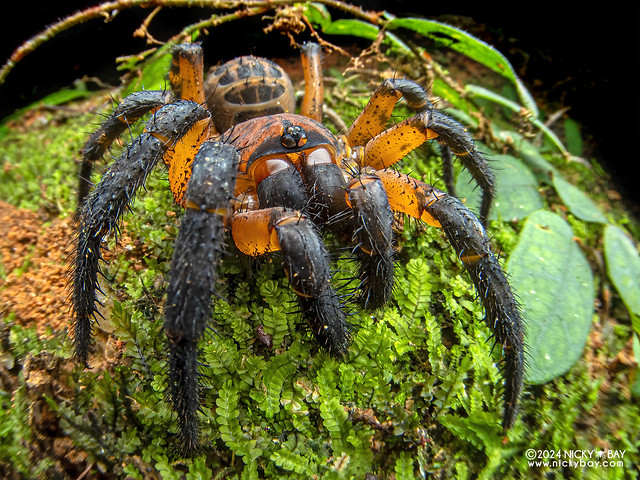





















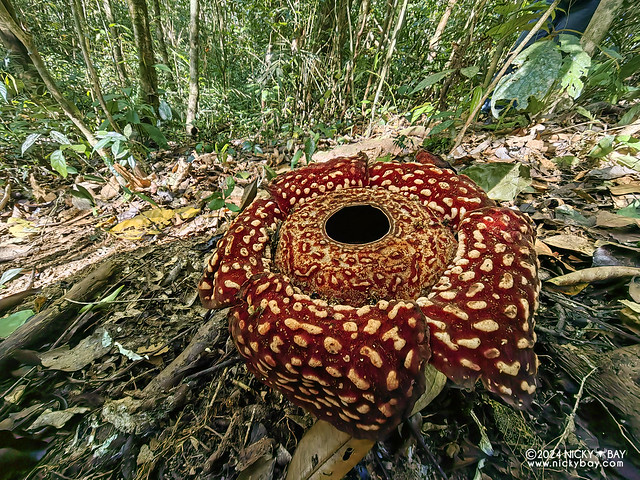






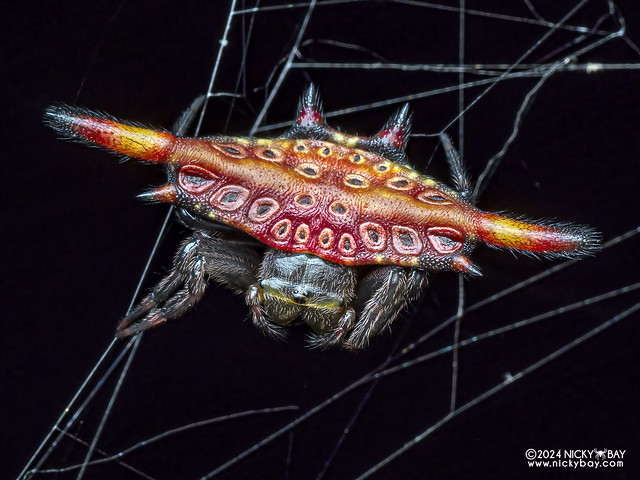

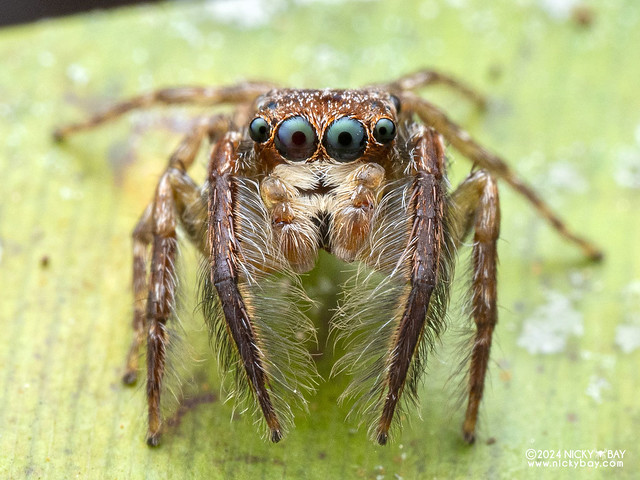















































































What’s Next for 2025?
2024 was definitely exciting with expeditions to Penang, Sabah, Chiang Mai, Pahang, Kalimantan, Sumatra and other little trips to nearby Johor. From this year alone, I had over 10 lantern bug lifers and am looking forward to expanding this number in 2025. Some conversations are already underway for our next expeditions, so if you can’t wait for the next annual highlights, just follow my iNaturalist, Flickr, Twitter, BlueSky or Facebook feeds. Perhaps I should update my Instagram a little more often too? Or maybe… I could organise another Borneo Bootcamp workshop? Let me know!

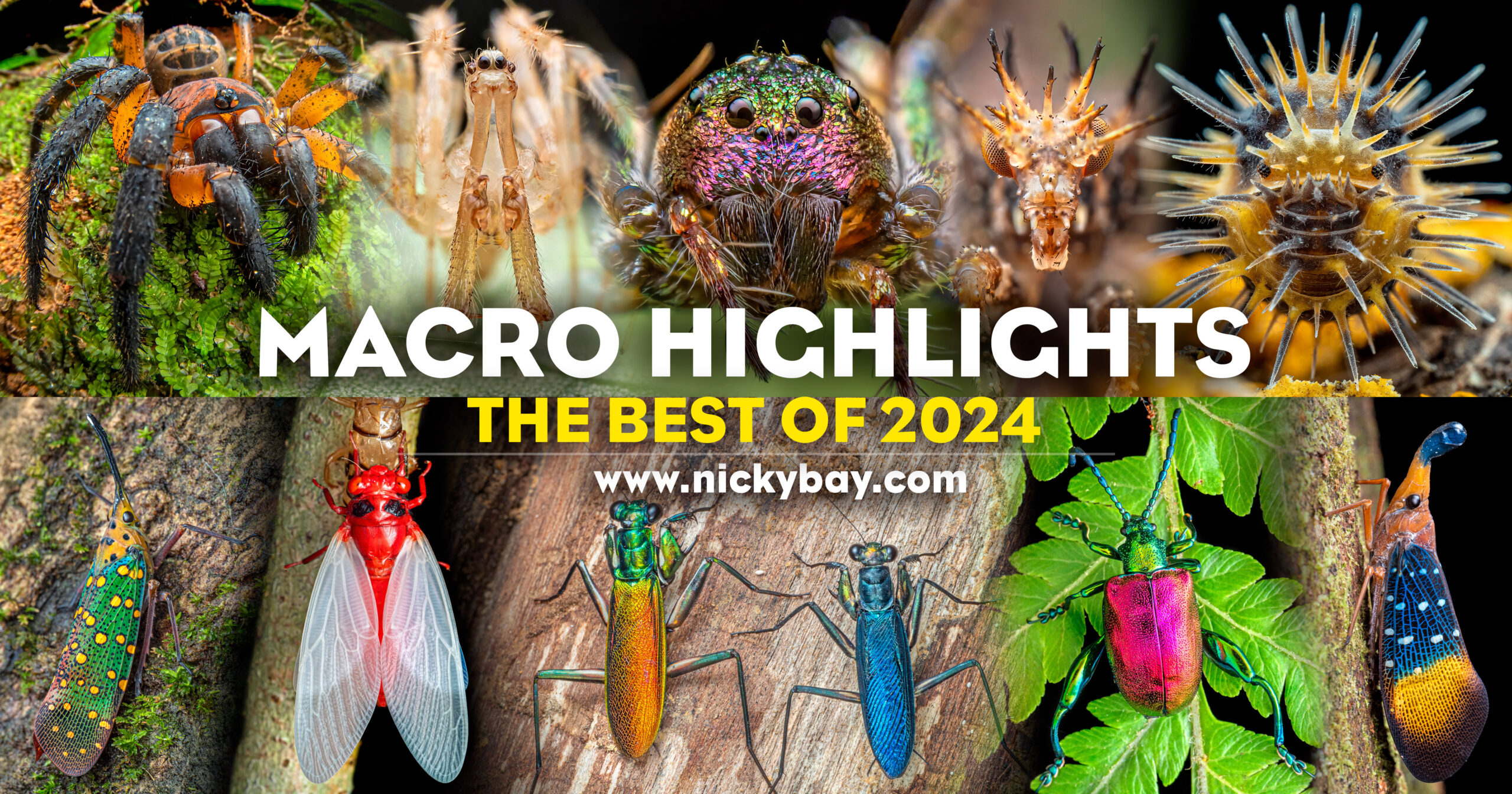



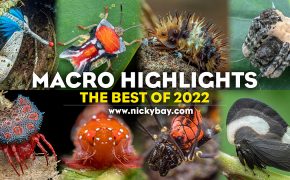
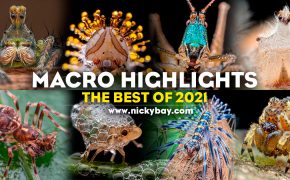
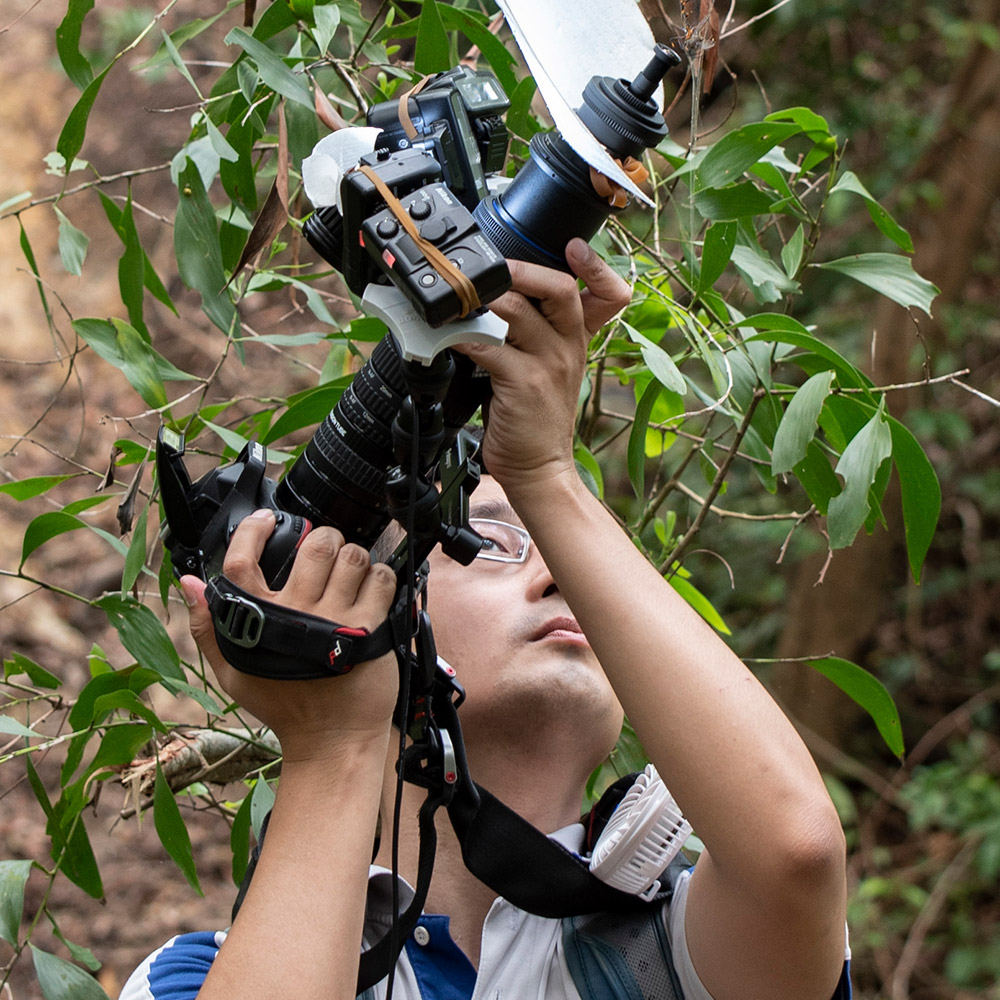








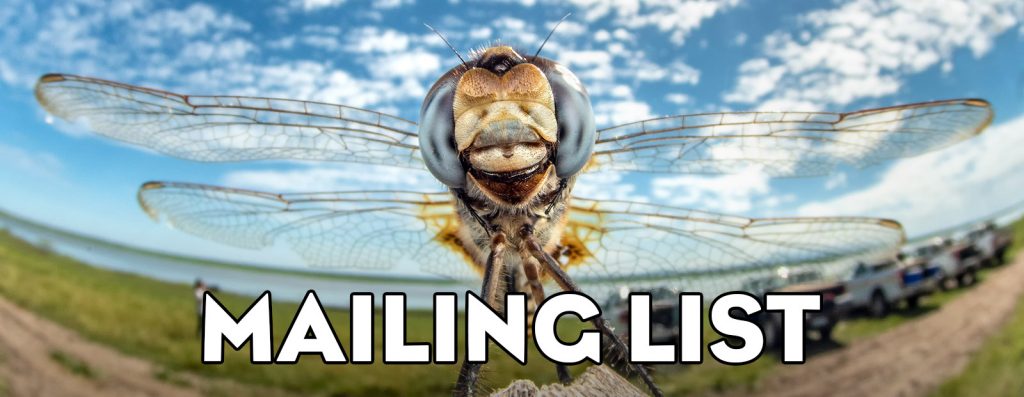
David bailward
Am in awe of your bug-hunting ability and amazing photographs, some hardly believeable!
Question about the Huntsman Spider (Barylestis sp.), why 3 legs hairy and other 5 smooth?
Dave from Mission, BC in western Canada
Nicky Bay
Hi David, the smooth legs are regrown legs. Spiders may lose legs and palps from battles, and regrow them gradually after each moult. The hairy legs would be the normal-sized legs.